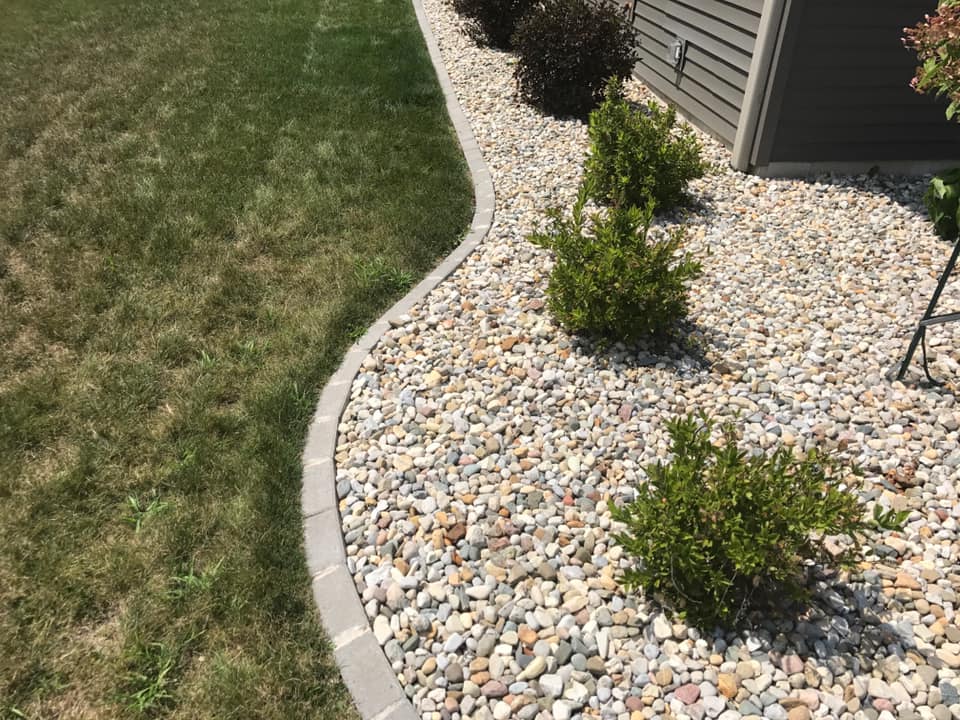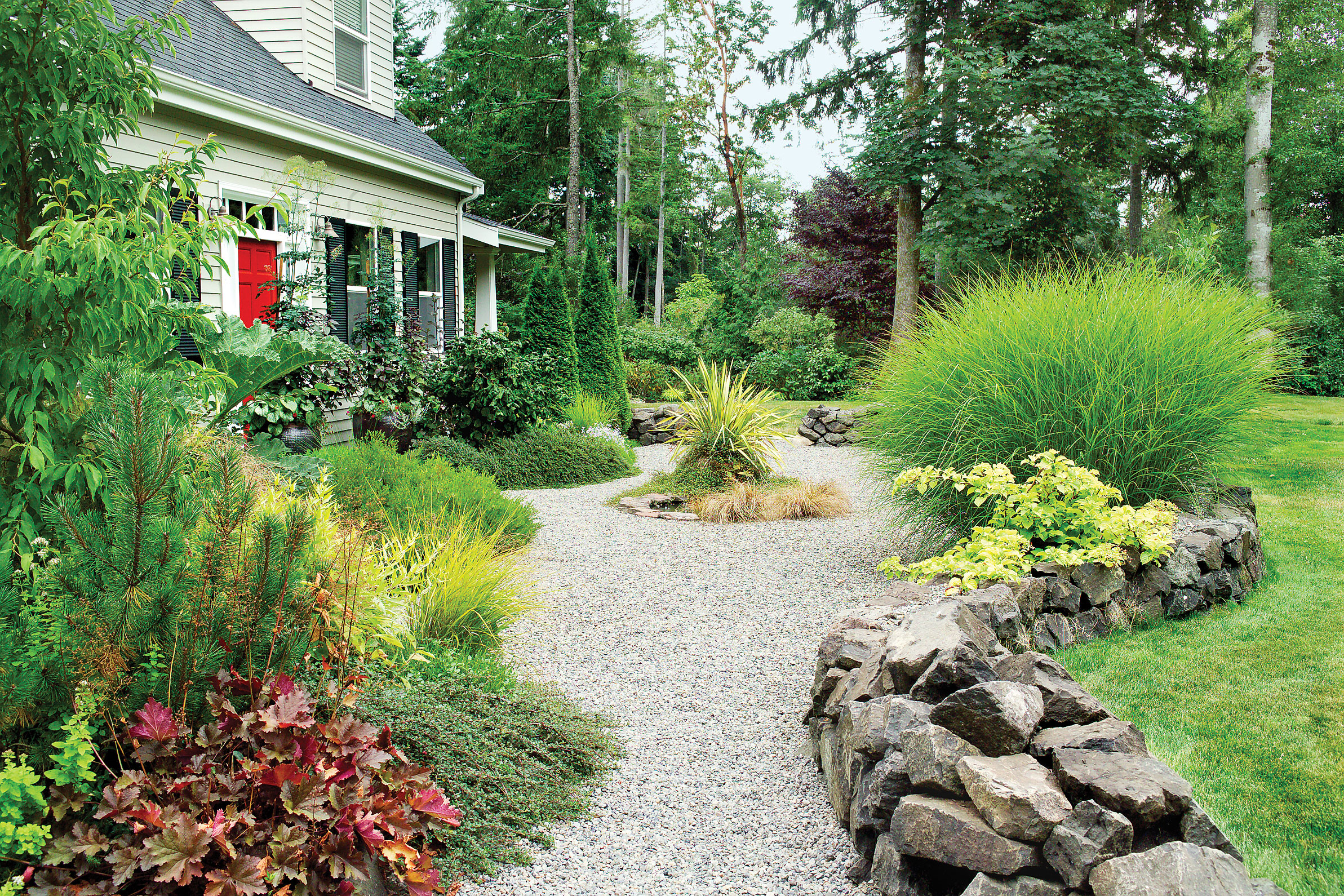Are you looking for a way to elevate your outdoor landscape without breaking the bank? Decorative gravel landscaping could be the perfect solution! With its versatility, ease of maintenance, and aesthetic appeal, gravel can transform any area into a stunning natural retreat. Drawing from my experiences and expertise in landscaping, I’m excited to share everything you need to know about decorative gravel, from choosing the right type to installation tips and design ideas. Let’s dive in!
What is Decorative Gravel Landscaping?
Decorative gravel landscaping involves using various types of gravel to enhance outdoor spaces. This can include driveways, pathways, patios, gardens, and more. The right type of gravel not only adds beauty but can also improve drainage and reduce weed growth.
Types of Decorative Gravel
Choosing the right gravel for your landscaping project is crucial. Here’s a breakdown of the most popular types:
1. River Rock
River rock, smooth and rounded, creates a natural aesthetic. Ideal for water features and pathways, they retain heat and are relatively easy to walk on.
2. Pea Gravel
Pea gravel consists of small, smooth stones that are great for driveways, garden paths, and play areas. Their softness underfoot makes them a kid and pet-friendly option.
3. Crushed Stone
Crushed stone is more angular and provides excellent drainage for landscaping. It’s perfect for driveways and can also be used as a base material.
4. Crushed Shells
Crushed shells give a unique coastal vibe. They work well in beach-themed gardens but can also be used in pathways and as mulch.
.jpg)
5. Lava Rock
Lightweight and porous, lava rock is excellent for slopes and in dry landscaping. They retain moisture and add a dramatic look.
6. Slate Chips
Slate chips are flat and have a striking appearance. They are ideal for garden beds and pathways, providing a modern touch to any landscape.

Benefits of Using Decorative Gravel in Landscaping
Why should you consider using decorative gravel in your outdoor space? Here are some compelling reasons:
1. Aesthetic Appeal
Decorative gravel adds texture, color, and contrast, enhancing the visual appeal of any landscape.
2. Low Maintenance
Once installed, gravel requires minimal upkeep compared to traditional landscaping methods that require regular mowing and trimming.

3. Excellent Drainage
Gravel facilitates excellent drainage, reducing the risk of water pooling and enhancing the health of nearby plants.
4. Cost-Effective
Whether you DIY or hire a professional, decorative gravel landscaping is often more affordable than traditional landscaping options.

5. Eco-Friendly
Gravel is a natural product and can be a sustainable choice for landscaping, especially if using locally sourced materials.
Installation Tips for Decorative Gravel Landscaping
Ready to dive in? Here’s a step-by-step guide to installing decorative gravel:
Step 1: Planning Your Design
Begin by sketching your landscape plan. Consider how the gravel will fit into your existing garden layout. Will it be a pathway, a patio, or a surrounding border?

Step 2: Choose Your Gravel
Based on your design, select the appropriate type of gravel. Think about color, size, and texture. Visit local suppliers to see samples in person.
Step 3: Prepare the Area
Clear the area of weeds, grass, and debris. For pathways, consider digging out some soil to create a level base.

Step 4: Install a Barrier
Using landscape fabric or edging material can help keep your gravel contained and reduce weed growth.
Step 5: Lay the Gravel
Spread the gravel evenly across the area, using a rake to create a uniform depth. A depth of 2-3 inches is typically recommended.

Step 6: Compact the Gravel
For driveways and high-traffic areas, compact the gravel to prevent shifting. You can use a hand tamper or rent a plate compactor for larger areas.
Step 7: Finishing Touches
Add stepping stones or plants to enhance the beauty of your gravel landscape. Consider mulch or decorative stones for added contrast.
Comparative Analysis: Decorative Gravel vs. Traditional Landscaping
| Feature | Decorative Gravel | Traditional Landscaping |
|---|---|---|
| Cost | More Affordable | Higher Costs |
| Maintenance | Low | High |
| Drainage | Excellent | Poor |
| Aesthetics | Varied and customizable | Standard |
| Installation | DIY-friendly | Requires professional help |
Challenges of Decorative Gravel Landscaping
While decorative gravel offers numerous advantages, there are challenges to consider:
1. Shifting and Spreading
Gravel can shift over time, especially in high-traffic areas. Regular upkeep may be needed to keep it in place.
2. Weeds
Weed growth can occur, especially if the barrier is not properly installed. Regular maintenance is essential to keep your landscape pristine.
3. Temperature
Gravel can become extremely hot in direct sunlight, making it uncomfortable for bare feet. Consider using stepping stones or shaded areas.
Design Ideas with Decorative Gravel
Feeling inspired? Here are some creative ways to use decorative gravel in your landscaping:
1. Garden Pathways
Create a winding path through your garden using colored gravel. This can guide guests through your space and showcase your plants.
2. Rock Gardens
Combine gravel with larger rocks and succulents for a modern rock garden. This low-maintenance option is striking and unique.
3. Driveways
Opt for gravel driveways for a rustic look. Crushed stone works well for stability and drainage.
4. Patios
Gravel patios can be a more affordable alternative to stone or pavers, allowing for various designs and layouts.
5. Zen Gardens
Use fine gravel in a Zen garden layout for a peaceful, meditative space. Rake patterns in the gravel for added texture.
Cost Considerations for Decorative Gravel Landscaping
Before starting your project, it’s essential to consider the cost:
1. Material Costs
The type of gravel you choose can significantly affect your budget. Prices generally range from $10 to $100 per cubic yard, depending on the type and location.
2. Installation Costs
If you hire a professional, labor costs can add an additional $40 to $60 per hour. However, opting for DIY can save you significantly.
3. Maintenance Costs
While gravel landscaping is generally low maintenance, you may need to budget for periodic replenishment of gravel or weed control measures.
FAQs About Decorative Gravel Landscaping
1. How do I choose the right decorative gravel?
Consider the area’s purpose, the size of the gravel, color, and texture. Visiting a supplier and viewing samples can also help in your decision.
2. Can I use decorative gravel in my driveway?
Absolutely! Crushed stone or gravel is a popular choice for driveways due to its durability and excellent drainage.
3. Will weeds grow through gravel?
Weeds can grow through if a barrier isn’t used. Installing landscape fabric underneath the gravel can help mitigate this issue.
4. How often do I need to replenish my gravel?
Typically, you’ll need to replenish gravel every few years, especially in high-traffic areas or with heavy rainfall.
5. Can I mix different types of gravel?
Yes! Mixing different types can create a unique look, but ensure the sizes and colors complement each other for a cohesive design.
Conclusion: Elevate Your Space with Decorative Gravel
Decorative gravel landscaping is an affordable, versatile, and visually appealing option for updating your outdoor space. Whether you choose to create a serene pathway or a vibrant garden bed, gravel can enhance the natural beauty of your surroundings while providing practical benefits. With proper planning and maintenance, your gravel landscape will flourish and provide enjoyment for years to come. Happy landscaping!